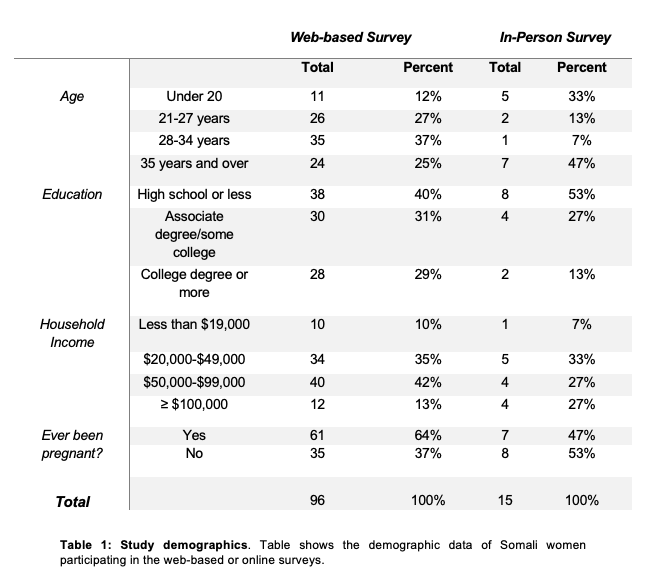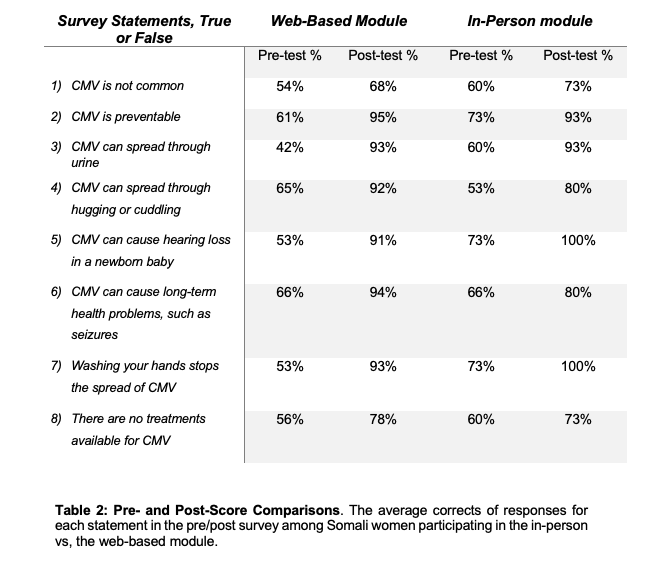Neonatal Infectious Diseases/Immunology
Neonatal Infectious Diseases/Immunology 2
666 - Examining Health Disparities in Congenital CMV (cCMV): A Study in a Somali-American Community to Assess Awareness of cCMV and Facilitate Understanding of Universal cCMV Screening
Publication Number: 666.241

Khadra Hussein, MPH (she/her/hers)
Medical Student
University of Minnesota Medical School
Saint Paul, Minnesota, United States
Presenting Author(s)
Background:
Congenital cytomegalovirus (cCMV) disproportionately impacts black and multiracial infants. While there have been strides made to address this critical health disparity, awareness and knowledge of cCMV hasn’t been investigated in the Somali community.
Objective:
As Minnesota is poised to become the first state to commence universal screening for cCMV in 2023, concern exists that the diagnostic evaluations and follow-up recommendations for screen-positive infants may engender mistrust in the context of an already-fragmented relationship between the Somali community and medical establishment. To address this issue, we compared two survey study strategies designed to gauge knowledge and perceptions about cCMV.
Design/Methods:
The inclusion criteria were Somali women aged 18 to 40 years old. First, a web-based intervention, consisting of a pre-survey, an 8-minute presentation, and a post-survey test, was offered. A separate, in-person educational event was conducted at a mosque, where a pre-survey was carried out, followed by an educational program, and a post-survey.
Results:
96 respondents partook in the online module and 15 in the in-person event as seen in Table 1. In comparing women’s pre/post test scores, women were more aware after completing the online and in-person interventions that cCMV can spread through urine ( >90%), causes hearing loss ( >90%), and proper hand hygiene reduces transmission ( >90%) shown in Table 2. For statistical comparisons, a point was assigned for each correct survey statement selected by each participant and then the mean of correct responses was tabulated for the pre/post surveys. In the web-based intervention, mean scores for the pre/post survey changed from 55% to 87% (paired t-test p=0.001), whereas in the in-person intervention, mean scores changed from 65% to 87% (paired t-test p=0.007). Using multiple linear regression, the expected post-test score was 2% (95% CI [-8%, 12%]) higher after the online module compared to in-person, adjusting for pre-test score.
Conclusion(s):
Both interventions were successful in enhancing knowledge about cCMV, although we did not find evidence that either intervention was substantially better than the other. There were still areas for improvement in women’s understanding of how common a CMV infection is (< 75%) and the treatments available (< 78%). Educational efforts are likely to be critical in enhancing the level of trust required to facilitate diagnostic evaluation and treatment of newborns identified with cCMV in this high-risk population in Minnesota.


